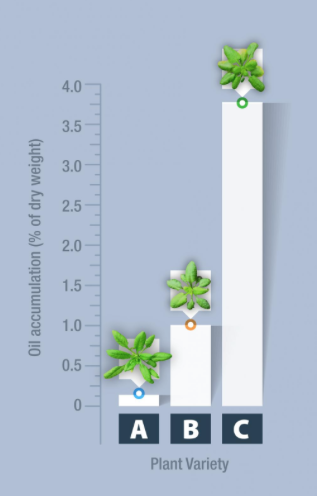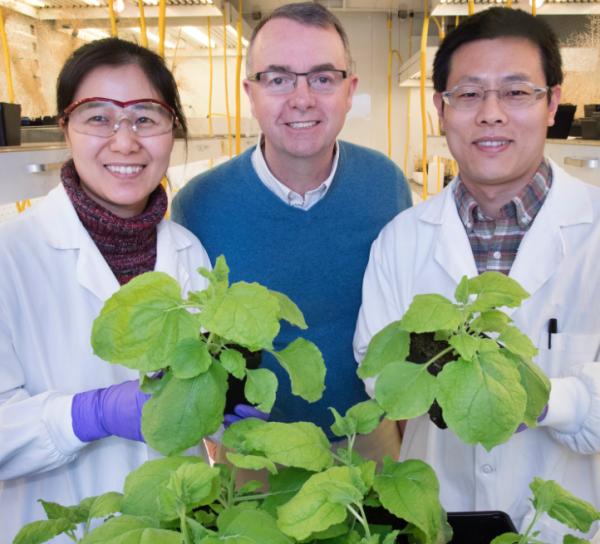While there are legions of plant researchers dedicated to the idea of using GMOs to maximize food production, there's a lesser-known syndicate of scientists trying to cultivate a different outcome: increasing plant output of biofuels.
By altering sugar levels in leaves through gene manipulation, researchers at the Brookhaven National Laboratory have shown that by making leaves fatter, oil production can be increased.
"Combining genetic mutations that decrease the transport of sugar out of leaves and the conversion of sugars to starch increases sugar levels in leaves," explains biochemist John Shanklin, who's leading the research, in a statement from Brookhaven Lab. "That excess sugar drives increased oil production by stabilizing the oil on-switch, and also by supplying the carbon building blocks needed to make more oil in leaves."
 As our high school biology teachers told us, photosynthesis is the process where water, sunlight and carbon dioxide come together to produce sugars. Those sugars then move from the leaves to other plant regions, where they form other compounds that promote the plant's overall growth.
As our high school biology teachers told us, photosynthesis is the process where water, sunlight and carbon dioxide come together to produce sugars. Those sugars then move from the leaves to other plant regions, where they form other compounds that promote the plant's overall growth.
But in this process of converting solar energy to chemical energy, researchers at the Long Island, N.Y.-based lab determined that biofuel benefits could emerge if they could block or slow the mechanism of sugar leaving the leaves. So, they "selectively bred plants to combine a series of traits," the study reported, "that blocked some of the sugar transport and conversion pathways, which resulted in increased oil production and accumulation."
The adjacent graph compares the production of oil in three different types of Arabidopsis, a plant with characteristics that make it "very desirable for laboratory study," according to the National Science Foundation, which calls it "The Model Plant." On its website the NSF says the Arabidopsis "requires only light, air, water and a few minerals to complete its life cycle. It has a fast life cycle, produces numerous self-progeny, has very limited space requirements," and that, most importantly for these purposes, it "possesses a relatively small, genetically tractable genome that can be manipulated through genetic engineering more easily and rapidly than any other plant genome."
The "A" plant is the wild, unaltered variety of Arabidopsis, while the "B" has, the researchers state, two mutations that "disrupt both the transport of sugar out of leaves and the conversion of sugar to starch." Lastly, the "C" variety has four mutations; the two present in the "B" model plus one that stymies another path that creates sugar, and another mutation that blocks lipid transportation.
"The results," the research team reports, "suggest this biochemical-genetic strategy could contribute to increasing oil production and accumulation in the vegetative tissues of plants grown for biofuels or other commodity products."
The study, titled "Sugar Potentiation of Fatty Acid and Triacylglycerol Accumulation," which was funded entirely by the U.S. Department of Energy, was published late last month in the journal Plant Physiology.




